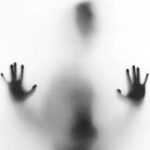Following the revelation that a key sequence had actually been shot in a zoo rather than the Arctic, the credibility of the BBC’s recent wildlife series Frozen Planet, fronted by Sir David Attenborough, has been further undermined by sensational allegations that, in reality, none of the animals featured in it were real. “It was all faked – there were no Polar bears, they were just actors in bear suits,” former wildlife cameraman Billy Shapstick has claimed in a recent newspaper interview. “The penguins were all dwarfs in costumes – even the sea life like narwhals were just trained divers in disguise. Obviously, they all had to be well insulated to keep out the cold, but none of them were real animals!” According to the thirty-eight year old, it isn’t just Frozen Planet which has been deceiving the viewing public in this way. “The whole wildlife documentary business is based on fakery – I don’t think there’s been a real animal filmed since at least the early 1970s,” he declares. “I mean, the reality is that genuine wildlife footage would be bloody boring – endless hours of lions licking their balls, monkeys masturbating and herds of zebra taking a dump. Wild animals rarely do anything interesting and they certainly don’t do it when convenient for the cameras. The only way you can guarantee interesting footage is to employ actors instead of real animals!”
The right-wing press, led by the Daily Excess, has predictably leaped on Shapstick’s claims as another example of outrageous fakery by the BBC. “It is quite clear that you can’t believe a bloody thing those pinko homosexuals broadcast,” thunders Excess Features Editor Francis Follicker. “This latest scandal is obviously part of their agenda to brainwash the public into believing that the natural world is worth saving because it is so diverse and wonderful. The reality is that it is so dull and worthless that they’ve had to make up all these exotic animals for their documentaries! Not that I was ever taken in, of course – they just went too far with some of those fabricated creatures. I ask you, what kind of idiot did they think would ever believe that giraffes were real?” However, following the photographer’s bizarre claims, evidence has emerged that the use of performers in animal suits instead of real animals is actually widespread, and not confined to television wildlife documentaries.
“It’s the only way they could keep zoos and wildlife parks going,” forty-two year old Dick Clubfoot – who claims to have spent seven years inside a gorilla suit at Sunbury Zoo in Surrey – told the Southern Counties Advertiser last week. “The whole animal rights business meant that it was increasingly difficult to keep real animals in captivity without being accused of cruelty. Not only that, but people are much easier to deal with – no special food is needed, let alone expensive veterinary treatment. Not to mention the fact that we’d always appear for the public on cue and entertain them on demand, unlike those bloody tempermental animals.” According to the Reigate-based actor – who had appeared in The Bill and Holby City before taking on his starring primate role, and only left the to take the lead in a touring production of Carousel – all the larger animals in the zoo were actually actors. “Obviously, the really big ones, like elephants, giraffes and zebra, had to be operated by two or three people, a bit like pantomime horses, but stuff like lions, tigers and primates were just simple man in a suit jobs,” he claimed in the newspaper article. “To be frank, the guys playing the big cats had it easy, they just had to lie around all day, just doing the occasional roar. My role, by contrast, was far more demanding, involving chest-beating, roaring and a lot of emoting, whilst always remaining dignified – the secret was always to get the punters to feel empathy for you.”
Clubfoot told the local newspaper that, as far as he was aware, all zoos, both overseas and domestically, are currently run along similar lines. “We were always having ‘animals’ transferred to and from other zoos – and they were all people in suits,” he said. “Believe me, there has never been any shortage of people willing to impersonate zoo animals. I mean, do you know what unemployment rates are amongst actors? This zoo work pays quite well, plus you get free accommodation and meals. Not to mention the fact that tens of thousands of people get to see your work. How many o those smug bastards at the National Theatre can say that?” Clubfoot even met his current partner whilst working as a gorilla. “She was playing a zoo keeper – it was love at first sight when she came to sweep the shit out of my enclosure,” he revealed. “We just couldn’t keep our hands off of each other – we nearly got caught out by some kids once whilst making love alfresco! It was bloody lucky we heard them coming – they could have been severely traumatised by the sight of a zoo keeper taking it roughly from behind from a large hairy gorilla!” The actor denies that this unsavoury incident precipitated his departure from the zoo. “I was ready for a new challenge,” he explained. “This production of Carousel is a radical reinterpretation, in which the protagonist is allowed to return to earth for a day in the form of a gorilla.”
But it isn’t just animals in wildlife documentaries and captivity which have been replaced by actors, according one expert. “The reality is that by the early 1970s the majority of wild animals larger than a pig had become extinct, the result of a combination of pollution, destruction of their native habitats and hunting,” Professor Henry Limpwell, former head of Chipping Norton University’s natural history department, has exclusively told The Sleaze. “A few large reptiles – crocodiles and monitor lizards, mainly, struggled on into the 1980s, along with a handful of gazelle and bison, but within a couple of years they had all gone.” With no wild animals to attract visitors and wildlife film makers, many countries feared for their tourist trade. “At first they tried disguising domestic animals, passing off cows as bison, or painting horses black and white to pose as zebras, for instance, but nobody was fooled,” he says. “That’s when they hit upon the idea of using people in animal suits instead – that’s how it has been ever since: the world’s governments have conspired to cover up mass extinctions.”
Not surprisingly, all of the claims of wildlife fakery involving people in animal suits, have been dismissed by the natural history establishment. “It is utterly preposterous,” spluttered Dr Quentin Hobble of the Trowbridge Natural History Museum. “Even if they wanted to create fake animals, surely governments would use CGI or animatronics? They’d be far more realistic!” Limpwell is exasperated by such attitudes. “Look, they didn’t have that technology back in the seventies,” he exasperatedly explains. “Besides, men in suits are far cheaper when you are carrying out an operation on this scale – most actors are such exhibitionists they’ll do this sort of crap for free!” The BBC has so far declined to comment on the original allegations that it had used men in animal suits instead of the real thing in Frozen Planet, other than to deny that Sir David Attenborough is really a marionette, the real one having died years ago.










